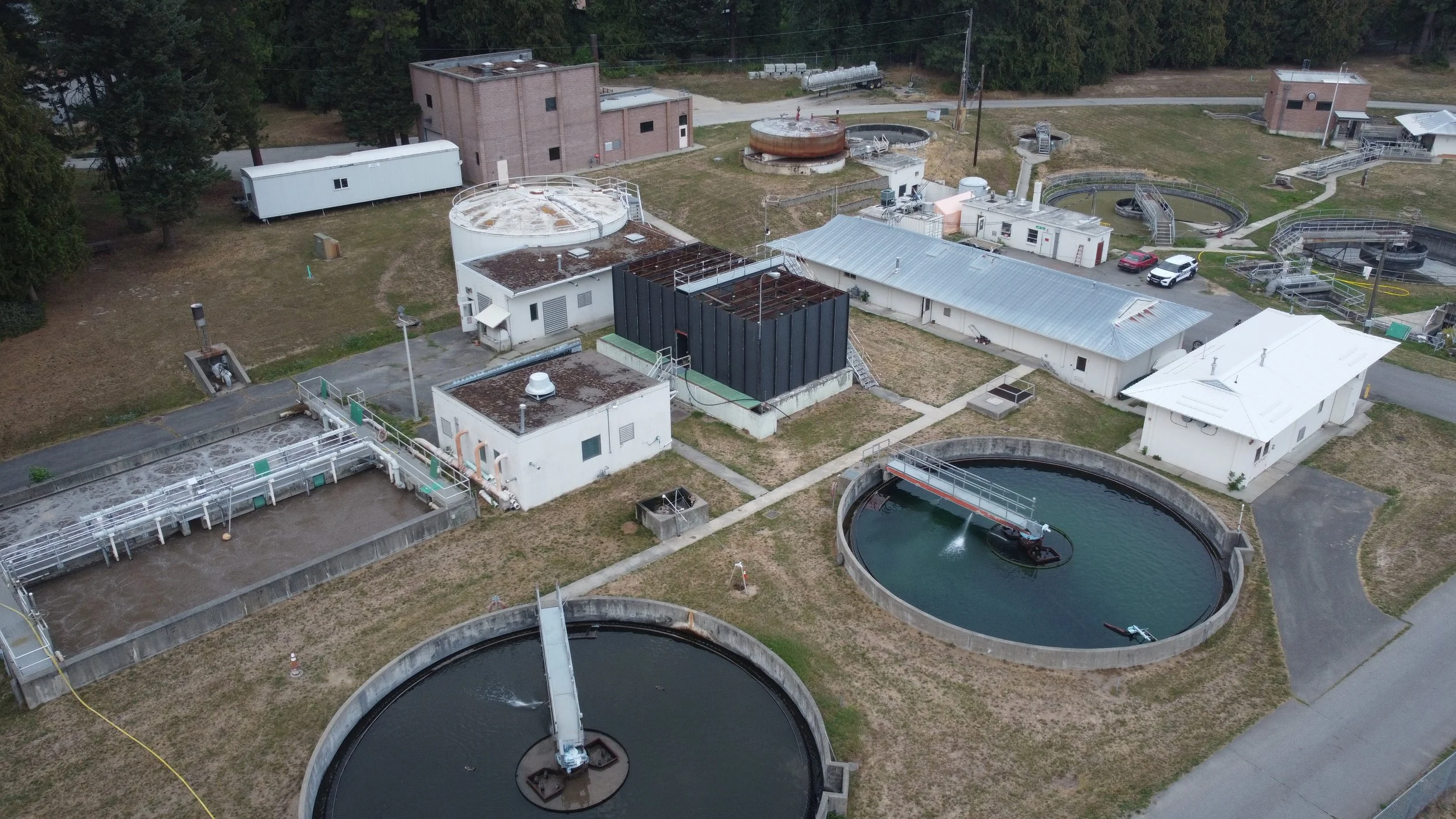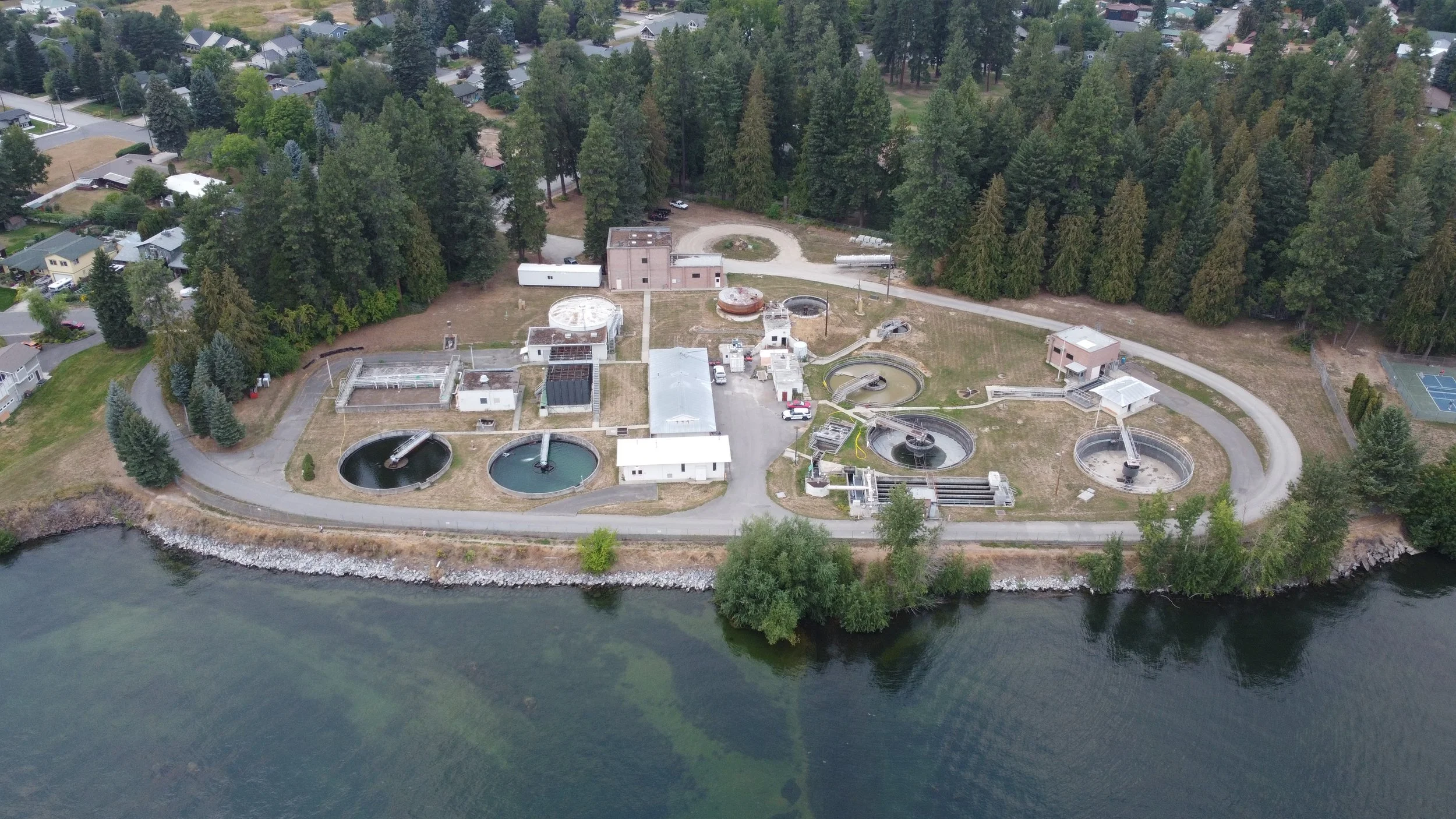History of Sandpoint’s Wastewater Treatment Plant
1950s – Constructed as a primary treatment facility.
The facility was originally built using components acquired from the Farragut Naval Station. The primary clarifiers from the original plant remain in use today.
1972 – The Clean Water Act mandated the addition of secondary treatment.
1973 – Trickling filters were installed as part of the secondary treatment system.
1983/1984 – The plant was upgraded to activated sludge treatment with enhanced solids handling capabilities.
2002 – A discharge permit was issued for the facility.
2007 – The facility’s 2007 plan update was carried out in collaboration with a Community Advisory Committee.
2007 – The plant’s permit expired.
2008 – Minor upgrades were completed, extending the facility's lifespan by an additional 10 years.
2009 – The City acquired 32.2 acres of land on Baldy Mountain Road to address future needs and explore potential regional solutions.
2016 – The City implemented the Sewer Lateral Improvement Program (SLIP) to reduce inflow and infiltration (I/I) entering the sanitary sewer system through private sewer laterals.
2017 – Planning began to determine the future of the wastewater treatment plant (WWTP).
2017 – The EPA issued a new permit to the City.
2017 – Community Advisory Committees were established to assist in planning efforts. The committee and City Council conducted tours of other WWTPs in November 2017.
2018 – The Idaho Department of Environmental Quality (IDEQ) assumed responsibility for permit issuance and compliance enforcement.
2018 – The Community Advisory Committee recommended, and the City Council approved, remaining at the current site with a “bridge” strategy. This plan includes essential improvements for an additional 7–10 years of plant operation, allowing time for Inflow and Infiltration (I/I) reduction efforts that could lower future improvement costs.
2018 – The City repaired 5,400 linear feet of sewer main to reduce Inflow and Infiltration (I/I)
2019 – The City adopted a Wastewater Facility Plan identifying the need for a new facility. For more information on the City's WWTP Facility Plan, click here.
2019 – Initiated an Inflow and Infiltration (I/I) Identification and Reduction Plan.
2020 – The City rehabilitated 5,000 linear feet of sewer mains and manholes to reduce Inflow and Infiltration (I/I).
2021 – As part of the Demonstration Basin Project, the City completed a private sewer lateral Inflow and Infiltration (I/I) reduction initiative, inspecting and repairing over 100 laterals.
2023 – The City finalized and adopted the Sewer Rate Study Report. For more information on the City's Utility Rates, click here.
2023 – Upgraded the WWTP by replacing the Headworks Screen to ensure smooth operation.
2023 – Adopted the updated Collection System Plan. For more information on the City's Collection System Plan, click here.
2024 – Initiated Supervisory Control and Data Acquisition (SCADA) upgrades at the WWTP to enhance operational efficiency.



